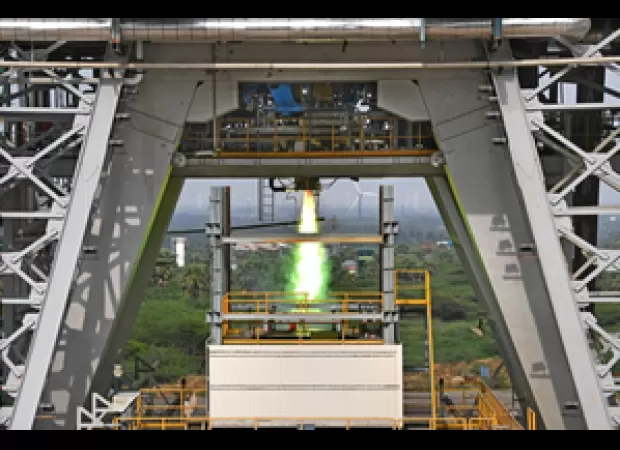ISRO makes progress in creating 2,000 kN thrust semi-cryogenic engine.
ISRO successfully ignites semi-cryo preburner, a crucial step in developing semi-cryogenic propulsion systems, using LOX-kerosene propellant.

In a major milestone for the development of semi-cryogenic propulsion systems, the Indian space agency announced on Monday that they have successfully achieved the ignition of a semi-cryo preburner. This achievement is a significant step towards enhancing the payload capacity of LVM3 rockets and future launch vehicles.
The Indian Space Research Organisation (ISRO) stated that they are currently working on a 2,000 kN thrust semi-cryogenic engine which uses a combination of liquid oxygen and kerosene as propellants. This engine is being developed by the Liquid Propulsion Systems Centre with support from other launch vehicle centers within the ISRO. The assembly and testing of the propulsion modules were carried out at the ISRO Propulsion Complex in Mahendragiri.
As part of the engine development process, a pre-burner ignition test article was realized. This test article is a full complement of the engine power head system, with the exception of the turbo-pumps. The first ignition trial was successfully conducted on May 2 at the semi-cryo integrated engine test facility at the ISRO Propulsion Complex (IPRC). This facility was recently inaugurated by Prime Minister Narendra Modi.
The ISRO further stated that the preburner ignition test has demonstrated a smooth and sustained ignition, which is crucial for starting the semi-cryogenic engine. This engine uses a unique start fuel ampule, developed by the Vikram Sarabhai Space Centre, which combines triethyle alumnide and triethyle boron. This fuel ampule is being used for the first time in an ISRO engine.
The ignition process is a critical aspect of developing liquid rocket engines. With the successful ignition of the semi-cryo preburner, the ISRO will now move on to development tests on the engine powerhead test article and the fully integrated engine. Additionally, the development of a semi-cryo stage with a propellant loading capacity of 120 tons is also in progress.
This achievement marks a significant advancement in the Indian space program and brings us one step closer to realizing our goals in the field of space exploration. The ISRO and its team of dedicated scientists and engineers continue to make remarkable progress towards pushing the boundaries of space technology.
65 Views




